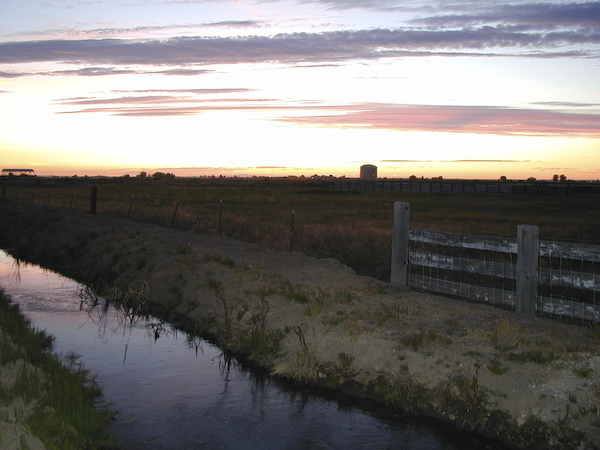Using Flash at Sunset
Many times, the sky’s colors take front and center in the play called “sunset”. In some scenes, however, the sunset has a more subservient role of backdrop for a stage which has more compelling actors in the foreground.
Particularly as we aim our cameras towards the setting sun, items in the foreground are almost completely lost in silhouette to the camera. If we compensate by overexposing to retrieve the detail in the foreground, we’ll wash almost all of the color out of the sky. By using a flash, we can provide some fill light for those foreground objects while preserving the colors in the sky. This fill light doesn’t extend very far, though, as the light from the flash falls off quickly the deeper you go into the scene; but for items that are nearby, the flash becomes a very useful secondary light source.
In this rural Idaho setting, my eyes (with their continuously variable apertures) could see the banks of the canal and the old fence — these features defined the scene for me. Using a flash, I was able to allow the camera to see these scene-defining features, too.

Tip of the Week
2007.10.01

